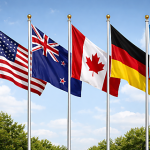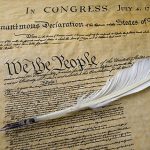
Walter Olson
When the Supreme Court ruled 6–3 this June in 303 Creative LLC v. Elenis that Colorado could not force a website designer to create a customized client website that ran contrary to her personal beliefs, a wave of public criticism mounted almost at once that took many of us by surprise.
The criticism concerned not the merits of the ruling but its procedural underpinnings, and in particular Lorie Smith’s having been allowed into court at all to challenge the law.
To quote Neil Gorsuch’s majority opinion, Smith was “worried” that Colorado would penalize her over her speech, but (critics said) the state hadn’t taken any enforcement action against her yet, nor had she even had to turn away any business. Instead, she couched her action as what First Amendment lawyers call a pre‐enforcement challenge. This made it, the critics said, not a real case or controversy, but maybe a “fake case,” a “made‐up case.”
Such talk dominated much of the early popular discussion of the case. And yet courts have long accepted pre‐enforcement challenges to restrictions on speech, as an exception to their usual refusal to entertain challenges to prohibitions until charges have been filed. The reasoning is that even a not‐yet‐enforced law banning expression may quite effectively chill someone’s speech, to the point that there might be no one left speaking to provide a court challenge.
In the 303 Creative case, all the appellate‐level judges to hear the case, including the Supreme Court dissenters led by Justice Sonia Sotomayor, accepted that Smith had established the “credible threat” of enforcement needed to get into court under this test, even as they went on to divide on the merits of her case.
In a Cato Daily Podcast shortly thereafter with Caleb Brown, I noted the historical paradox involved in this kind of standing’s coming under fire from commentators on the legal left (passage starts around 2:40):
Now, ironically, of course, the development of pre‐enforcement challenges … to prevent government violations of speech rights was something developed in large part by progressives, to the applause of groups that didn’t want to put [holders of] unpopular views in the position of “you have to risk going to jail before you find out how the courts rule on the law.…
If for some reason the courts listened and did away with, or sharply limited, pre‐enforcement challenges, it is progressive objectives that would suffer most.
On this subject, I recommend as both thorough and useful a forthcoming article by Richard Re of the University of Virginia School of Law that he has excerpted in several posts at the Volokh Conspiracy. He makes a few simple points about the case at hand before drawing out some implications:
Smith’s standing was a straightforward application of current doctrine regarding pre‐enforcement standing, especially since Colorado essentially stipulated that Smith was right in perceiving a credible threat of enforcement against her speech. Nor is it surprising that justices like Sotomayor declined to pursue the standing angle. Contrary to implications from quarters like Vox, Slate, The New Republic, and Sen. Sheldon Whitehouse (D‑R.I.), “there is no procedural scandal here.”
Nonetheless, the case stands as one of multiple data points — others include the student loan case and the U.S. v. Texas immigration case — suggesting that narrow views of standing might increasingly hold appeal for progressive legal advocates as a way of fending off challenges to the merits of government action. “Already, Justice Alito may be a more likely vote for standing than, say, Justice Kagan. However, most of the conservatives still tend to enforce vigorous standing rules.” (More from Clark Neily on standing here.)
That, in turn, is part of yet a wider pattern, including issues that might seem a bit farther afield, such as the degree of deference courts should accord government actors. Many of these are subject to recurrent ideological cycles that depend, at least in part, on perceptions of which “side” has the upper hand in the courts (and among executive‐branch government actors).
However these wider trends may play out, the result in 303 Creative suggests that the First Amendment still looms large enough in the thinking of senior judges that they aren’t actively looking for ways to foil pre‐enforcement vindication of speech rights, even if doing so might please some voices on the outside. Let’s be glad of that.







